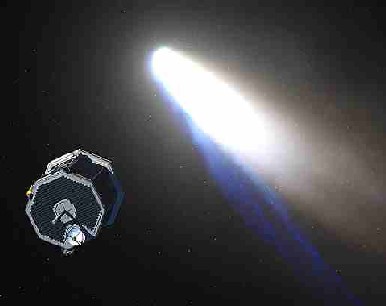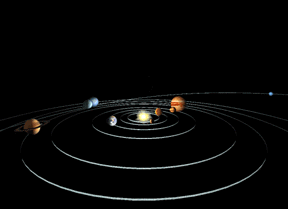Click on image for full size
Courtesy of NASA
CONTOUR on its Way to Catch a Comet!
News story originally written on July 3, 2002
NASA’s Comet Nucleus Tour (called CONTOUR) launched July 3, 2002. The CONTOUR spacecraft will fly by at least two comets. It will take pictures and collect dust from the nucleus of each comet. Learning more about comets will help scientists answer some big questions!
One of these big questions is what the solar system was like when it was very young. Comets formed when our solar system formed. Because they are very old, they may tell us what changes were going on when the solar system formed.
Another big question is how Earth first became a good place for life a long time ago. Comets may have helped! When they showered over the Earth long ago, they may have brought things, like water and carbon, which helped life evolve and grow. If we know more about what comets are made of, we can know if this might be true.
To answer these big questions, the CONTOUR spacecraft will record data from at least two comets. It will encounter Encke in November 2003, and the Schwassmann-Wachmann 3 comet in June 2006.















